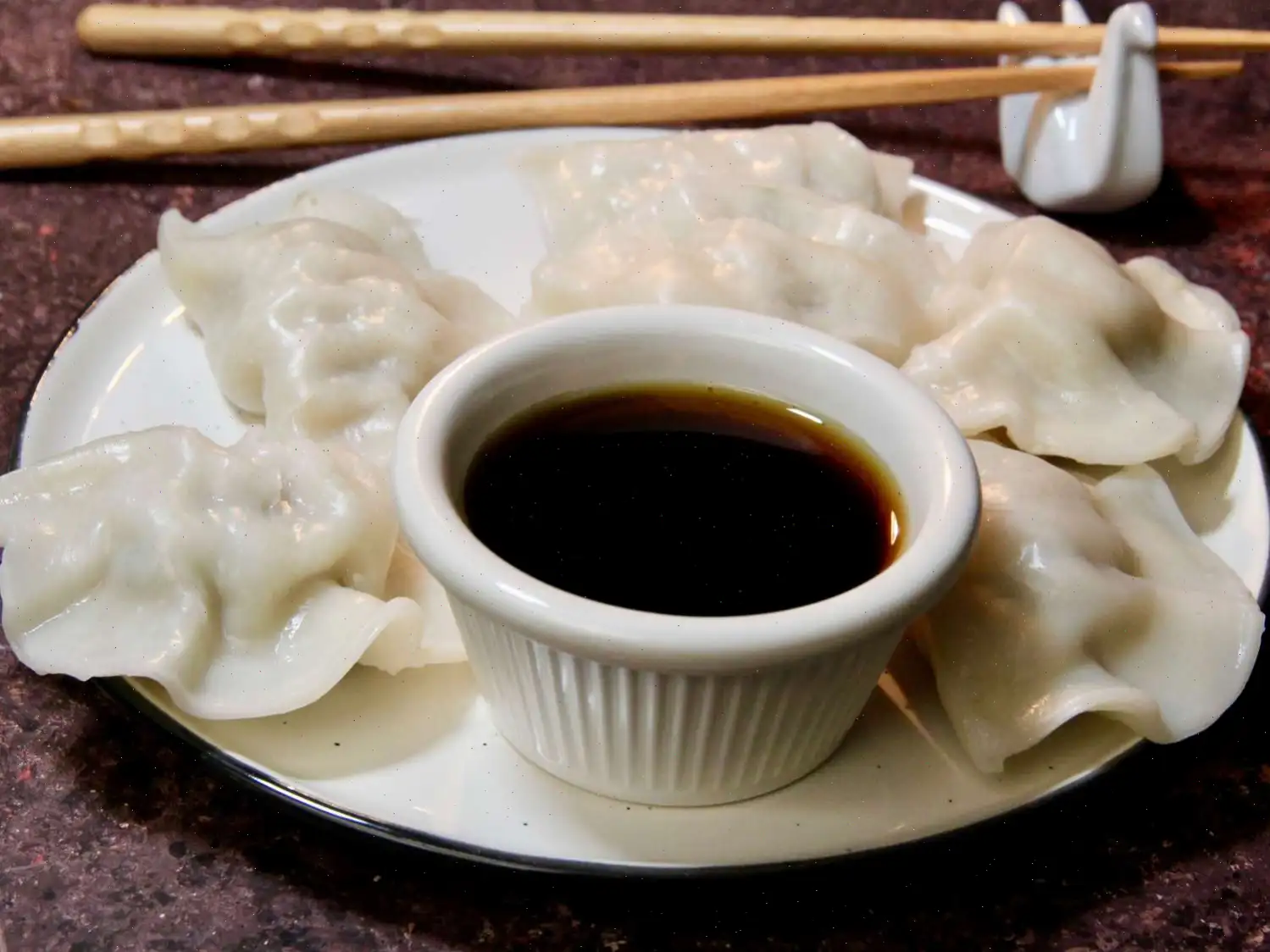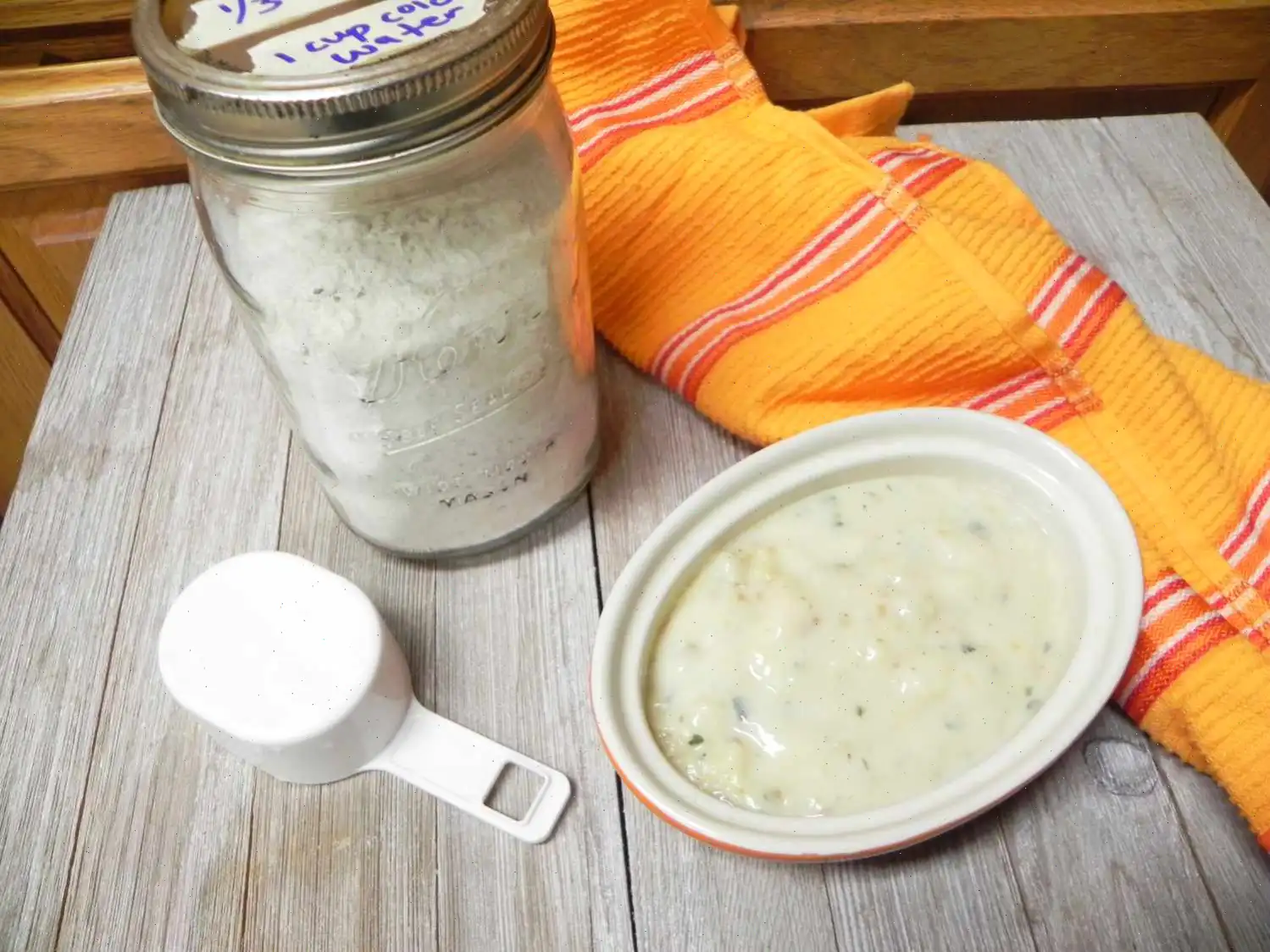
3-Ingredient Japanese Potsticker Dip Recipe
Ingredients
- 1 tablespoon soy sauce
- 1 tablespoon rice vinegar
- teaspoon chili oil (or to taste)
Directions
- In a small bowl or ramekin, combine the soy sauce and rice vinegar.
- Add chili oil to your preferred level of spiciness.
- Stir the mixture gently with chopsticks.
- Dip and enjoy with your favorite dish!
Nutrition Facts (per serving)
| Nutrient | Amount | % Daily Value |
|---|---|---|
| Calories | 17 | - |
| Total Fat | 1g | 1% |
| Saturated Fat | 0g | 1% |
| Sodium | 902mg | 39% |
| Total Carbohydrate | 1g | 0% |
| Dietary Fiber | 0g | 0% |
| Total Sugars | 0g | - |
| Protein | 1g | 2% |
| Calcium | 3mg | 0% |
| Iron | 0mg | 2% |
| Potassium | 35mg | 1% |
* Percent Daily Values are based on a 2,000 calorie diet. Your daily values may be higher or lower depending on your calorie needs.
** Nutrient information is not available for all ingredients. Amount is based on available nutrient data.

Recipe by IBNSHISHA
History of the 3-Ingredient Japanese Potsticker Dip
The origins of this simple yet flavorful Japanese dipping sauce can be traced back to traditional Japanese cuisine, which is known for its emphasis on umami-rich flavors. The combination of soy sauce, rice vinegar, and chili oil reflects the Japanese appreciation for balancing salty, sour, and spicy notes in dishes. While potstickers, known as "gyoza" in Japan, were introduced from China, the accompanying dipping sauce has evolved to suit local tastes, making it a staple in Japanese households. The minimalist recipe, with just three ingredients, allows the distinct flavors of each component to shine through, offering a quick and delicious dip for dumplings.
Regional Variations
In Japan, gyoza is typically served with a soy-based dipping sauce, but regional variations exist in terms of seasoning and flavor intensity. Some areas might incorporate a dash of sesame oil or garlic, while others prefer a sweeter sauce with a hint of mirin (sweet rice wine). The inclusion of chili oil is more commonly found in the sauce recipes of western Japan, especially in regions where spice is appreciated more, such as Kyushu. However, the basic combination of soy sauce and rice vinegar remains universally loved across the country.
How This Dip Differs from Similar Dips
While similar dipping sauces are often used in Chinese and Korean cuisines for dumplings, the 3-Ingredient Japanese Potsticker Dip is distinctive in its simplicity and balance of flavors. Chinese dipping sauces tend to include ingredients like hoisin sauce, garlic, and ginger, resulting in a more complex and sweet flavor profile. Korean dips may incorporate gochujang (fermented chili paste), adding a thicker, more robust taste. In contrast, the Japanese version focuses on the purity of soy sauce and rice vinegar, with chili oil offering just a touch of heat, making it a lighter and more subtly flavored alternative.
Where This Dip is Usually Served
This dipping sauce is most commonly served with gyoza (Japanese potstickers) at both home and in restaurants. Gyoza itself is a popular appetizer or side dish in Japanese cuisine, typically enjoyed during casual meals or as part of a larger spread. The 3-Ingredient Potsticker Dip enhances the flavor of the dumplings, making it a favorite choice at izakayas (Japanese pubs), ramen shops, and casual eateries. It's also often paired with other types of dumplings, such as steamed shumai or fried wontons, for a flavorful experience.
Interesting Facts
- The word "gyoza" comes from the Chinese word "jiaozi," but it was adapted to suit Japanese tastes and cooking methods. Gyoza is typically pan-fried, creating a crispy bottom with a soft, steamed top.
- Rice vinegar, an essential ingredient in this dipping sauce, is made from fermented rice and is less acidic than regular vinegar, giving it a milder taste. Its a key ingredient in many Japanese dressings and dipping sauces.
- Chili oil is a versatile ingredient in Asian cuisine, and while its often used to spice up dishes, its richness adds a layer of complexity to the dip. Some variations of chili oil include toasted sesame seeds, garlic, and Sichuan peppercorns for additional depth of flavor.
- In Japan, gyoza is often served with a bowl of rice and miso soup, making it a popular choice for a light lunch or dinner. Gyoza's popularity has also led to the creation of specialized gyoza restaurants, where various fillings and cooking techniques are explored.
In conclusion, this simple 3-Ingredient Japanese Potsticker Dip is more than just a sauceit's a reflection of Japans culinary simplicity and love for balance. Whether served at a casual gathering or as part of a full Japanese meal, it enhances the flavors of gyoza, making each bite an enjoyable experience.
You can listen to this recipe in AI audio format. Simply click the play button below to listen to the content in a format that suits you best. It’s a great way to absorb information on the go!
FAQ about 3-Ingredient Japanese Potsticker Dip Recipe
Comments
Jillian
10/06/2025 01:52:54 PM
This stuff is sooo good! I made this the other night to go with steamed dumplings we ordered and unfortunately we didn't have enough sauce. For some reason one small cup for me just doesn't cut it. I used low sodium soy sauce and subbed sesame oil for the chili oil - I also added some finely chopped green onions. If you want to make it a bit sweeter add just the tiniest bit of brown sugar. You can change it up with ginger as well. Just play with it to suit your tastes.
lutzflcat
05/26/2025 04:00:49 PM
Unlike some reviewers, I actually liked the tang of the rice vinegar. Unfortunately, like so many Asian dipping sauces, the soy sauce totally dominated. I did add a little sesame oil and some ginger paste, and although it was OK, think I’ll be movin’ on.
Joshua Green
03/23/2024 10:50:44 PM
This recipe just flexed on all other meals.
Arlene Nash-Hanner
09/19/2020 11:59:23 PM
It was quick and easy and I had all the ingredients!
f00die
09/04/2019 06:35:11 PM
I used this recipe to dip simple homemade pork potstickers in. It wasn't bad as is, but I added a little sesame oil because I thought the vinegar/soy combo was a bit strong.
pjb3655
07/19/2019 10:52:34 PM
Made according to the recipe. Really liked it.
SherryC
12/16/2016 10:24:04 PM
It was good we felt still too salty. Even using low-so soya. Will tamper a bit but definitely a great base.
MSDISH
12/12/2016 12:22:28 AM
Quick, easy and just what I was looking for! It can be as spicy as y'want - so is excellent!
Nancy
05/13/2016 02:11:38 AM
I didn't have the chili oil, so I just used two ingredients. This was super easy and served the intended purpose well.
Peggy McKay
03/24/2016 12:19:19 PM
it's ok but the ratio of vinegar and soy is off at least to our tastes. Way to sour I found that 3 or even 4 to 1 was much better








